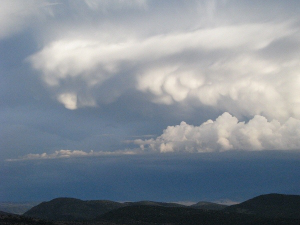Kate Rauner's Blog, page 81
October 2, 2015
Movie #TheMartian opens today based on a #FridayRead novel by author with his own Cinderella story
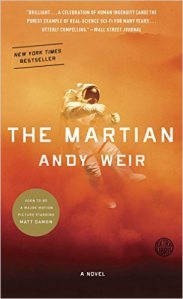 The Martian tells the story of NASA astronaut Mark Watney, mistakenly left behind for dead when his crewmates evacuate the planet during a mission-aborting storm. We begin with Watney’s point of view: “I’m pretty much fucked.” While Weir also gives us chapters from the viewpoint of NASA on Earth and the crew who left him behind, I suspect Watney is Weir’s favorite character.
The Martian tells the story of NASA astronaut Mark Watney, mistakenly left behind for dead when his crewmates evacuate the planet during a mission-aborting storm. We begin with Watney’s point of view: “I’m pretty much fucked.” While Weir also gives us chapters from the viewpoint of NASA on Earth and the crew who left him behind, I suspect Watney is Weir’s favorite character.
Story of the story
The story of how the book went from pen (or keyboard) to movie screen is Andy Weir’s real-life fairy tale.
He began writing the book in 2009, researching thoroughly so it would be as realistic as possible. Weir decided to blog the book online one chapter at a time for free. In 2011 fans of the website convinced him to self-publish the book on Amazon – originally as a Kindle book at the lowest price Amazon allowed: 99¢.
It soared to the top of Amazon’s list of best-selling science-fiction titles.
Podium Publishing signed for the audiobook rights in 2013.
Crown Publishing purchased the print rights and re-released it in 2014.
The book debuted on the New York Times Best Seller list on March 2, 2014.
Now it’s a major motion picture.
Rejections
I can imagine why traditional literary agents rejected Weir’s books if they’re all like this (The Martian wasn’t his first try.) Weir’s mission to Mars feels deeply “NASA” with chipper, brilliant, and brave astronauts. As the book promos say, The Martian is a tale of survival of the geekiest. You could have an Excel spreadsheet open as you read, to check Weir’s math. All this sounds too tech-heavy for any traditional publisher to try.
The Martian defies “tradition”
The possibly-doomed astronaut tells most of his story through log entries – “telling” rather than “showing” (a bugaboo in writing advice.) For every clever survival ploy and disastrous setback, you know he survived because he’s logging the sol’s adventures after the fact. There’s all the detail from Weir’s research – technical “backstory” the astronaut shares in his log – more anti-writing advice. There’s no villain, though Mars is quite an antagonist. Most importantly, there’s a lack of soap opera – Weir offers no dark secrets or betrayed loves – very little about the astronaut, his friends, or family at all.
Fun read
I’m an engineer and appreciate the sense of reality Weir creates in his story, and the brave plucky astronaut, but even I started skimming the math late in the book. That was because I wanted to find out what happened next – not because I wanted the book to end. Read the free preview and if your reaction is “I want three hundred pages of this,” read the book. You’ll be happy.
Real Settlers Can Learn From The Martian
Mars-One, real-life non-profit dedicated to placing a colony on Mars, takes lessons from the book:
“If you want to be the first, you have to like being alone. Stated in a more practical way, when you’re a settler in the first settlement on Mars, you have no neighbors when you need to borrow some folding chairs for your next party.”
But Mars-One wants to plant a permanent colony while The Martian mission does not. As they say, “The novel described some useful future-tech inventions, like nano-woven habitat cloth, nuclear spaceships, and durable life support equipment. But… where are all the robots? And 3D printers? And other tech for basic infrastructure?”
What others say
Amazon Kindle edition is up to $5.99 now, with over 13,000 reviews averaging 4.5 stars. Phenomenal. For a little balance, I looked at the few 3-star ratings. These readers disliked exactly what everyone else loved: “This is a nerd’s book. It is driven almost entirely by the mastery of technical details.” [M. Milligan] The optimistic, wisecracking castaway sounded juvenile to some. It did remind me of the type of dialog from science fiction’s pulpier era, with the modern acceptance of an occasional “fuck.” Can you imagine Neil Armstrong texting to JPL “Look! A pair of boobs! -> (.Y.)? I’m curious to hear how the movie presents Watney’s monologs and dialogs.
The story behind The Martian is at Wikipedia. SPOILER ALERT – Wikipedia includes a plot summary.
Filed under: Science Fiction Tagged: #themartian, Andy Weir, colony, hard science fiction, mars, Mars One, movie, NASA, real life, settle, space, survival, The Martian








September 30, 2015
I #AmWriting #FlashFiction with an angel on Mars
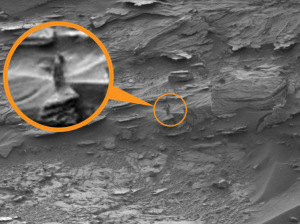
NASA Curiosity
Mysterious Ways
Souls think being an angel is easy – all music of the spheres and celestial light. Well, it’s freaking hard work. When you get an assignment, no one tells you why – it’s all “God moves in mysterious ways.”
“You are to appear as a human female, partly cloaked.”
“And… why?”
I got the usual indulgent smile. Infuriating. Like I’m still a fledgling.
“Make sure your breasts show.”
Sigh. There’s no point arguing.
I’ll have to look up how many breasts are required for a human.
“Where?”
“On Mars. Details are in your assignment file.”
I accessed the database.
“Mars? A rocky planet around a piffley little star in the Milky Way?”
“The boss has a weakness for that star system.”
“But why Mars? It’s cold as hell. You want a physical manifestation? There’s no air.”
“Improvise. You only need to appear for a photo op – for a space probe called Curiosity, sent by humans on the third planet – Earth.”
I swung by Earth to find out what “female” meant – a database gets you just so far and I like to add my personal touch. It wasn’t hard to figure out what “female” meant – animals only have two sexes there!
I discovered these humans aren’t very good at interplanetary exploration – half their attempts to land on Mars fail spectacularly. But they keep trying and I admire their chutzpah. Curiosity’s crazy drop from a sky crane was brilliant.
It took awhile to find the silly, inconsequential probe, even on a tiny rock like Mars. It’s searching for conditions that might have once supported life. Humans’ probes can’t find life directly yet – unless an elephant galumphs by.
I found a lot of neat critters on Earth and elephants are my favorite. I thought about manifesting as an elephant – the supervisor said to improvise. But maybe I improvise too much – maybe that’s why I’m assigned to this barren rock now.
I settled on an appropriate ledge and waited for Curiosity’s camera to rotate in my direction. The more I thought about it, the more it seemed unfair to interrupt the humans’ exploration with something that looks impossible. It’ll be eons before they understand.
The details are up to me…
I manifested as rock, angled to the Sun so long shadows became my hair and a coating of dust glistened as breasts.
It’s awfully hard to stand still and look enigmatic in the burning cold, even as a rock. Sometimes I think the boss has forgotten what it’s like to be corporeal.
I’m proud of what I did, though pride is frowned on. I guess I’m not ready for the next level yet.
I transmogrified back to myself, took a little detour to blow dust off the rover’s solar panels, and wished the poor little thing good luck.
What are humans going to make of my pareidolidal Dark Lady? Whatever it is, I bet they’ll keep learning, keep exploring. I feel good about that.
I filed my report as I traveled and the supervisor was waiting for me.
“What was this rock-lady-thing you did?”
“I improvised.”
“I’ll never understand how you got into Heaven.”
“God moves in mysterious ways.”
Filed under: Science Fiction Tagged: #FlashFiction, #FridayRead, #ScienceFiction, angel, Curiosity, Dark Lady, Fantasy, mars, NASA, rover, short read








September 26, 2015
Visit #NativeAmerican #Pueblo sites

That’s me with a tuff rock formation
I’ve been camping at Bandelier National Monument and the nearby Jemez Mountains. Fall is here in the mountains – one morning it was almost down to freezing when I crawled out of the tent.
Ancestral Pueblo People built villages into the bizarre “Swiss-cheese” cliffs of volcanic tuff (a soft stone formed by huge accumulations of ash) and on the valley floor below.
The ruins predate the Spanish conquest of northern Mexico (what is now the  US southwest), but archaeologists have found evidence of ancient humans in the area dating from shortly after the last ice age. I guess the area’s been drying out ever since. Bandelier pueblo peoples didn’t “disappear,” as you may have read. They moved – probably drought had a lot to do with that – and evolved into modern pueblos.
US southwest), but archaeologists have found evidence of ancient humans in the area dating from shortly after the last ice age. I guess the area’s been drying out ever since. Bandelier pueblo peoples didn’t “disappear,” as you may have read. They moved – probably drought had a lot to do with that – and evolved into modern pueblos.
There are other sites in the Jemez dating from the Spanish occupation – a mixture of fascinating Spanish history and sad conquest of the indigenous people. A kiva (ceremonial structure) has been reconstructed at the misnamed Coronado Historic Site. Early 20th century archaeologists found wonderful paintings on the walls, which were removed for study and preservation. A local pueblo artist has reproduced the paintings, but since they represent ceremonial figures, no photography is allowed. You’ll have to travel to New Mexico to see them.
Filed under: Neat Science News Tagged: ancestral pueblo people, Bandelier, camping, historic site, Jemez, mountain, National Monument, new mexico, pueblo, vacation








September 23, 2015
September 19, 2015
#Wormhole_Adventure With a Twist in This #ScienceFictionBook

I don’t like the cover much – but since I picked it up I guess it worked.
I tore through 340 pages in two days and stayed up past my bedtime. The main character, Mike, has a rare eidetic memory – he notices and remembers an amazing amount of detail about everything. Since the book is mostly from his point of view, Clines writes all that detail down. An eidetic memory is annoying at times.
At first, I was worried I needed to remember all that detail, too, but not so – Clines reminded me of anything I really needed to enjoy the story.
Mike – protagonist
I loved the vision Mike has of his own mind as swarms of black ants and red ants carrying bright bits of memories and thoughts, arranging them, seeking patterns, and drawing conclusions. Since Mike is also off-the-scale high IQ, he doesn’t simply remember – his ants figure things out. His mind exists and functions outside his core notion of who he is, and feels very real.
Premise
His job, for a lifetime friend who manages projects for DARPA, is to find out what’s going on at a top secret project. Once you accept that the American government would agree to allow scientists they fund to keep everything a secret from them – everything except the claim that “it works” – the story is off.
At first the technology seems to be generating a wormhole SciFi readers will recognize. A pair of devices, drawing enormous electrical power, transports people between them instantaneously. But there’s a wonderful twist that fits well with real-world hypotheses in physics – at least, as far as I can tell from the popular media.
Story’s opening
The book opens with a government agent returning home from a business trip, apparently psychotic. The two characters in that chapter never appear again. It’s the kind of exciting opening considered vital to hooking readers.
The story begins in Chapter Two where we meet Mike. The significance of that first chapter does tie into the story in about twenty pages. Great. I hate teases that hang out there forever.
What the story offers
Every story’s “gotta have” a love interest. In this story, the love interest actually relates to the plot and allows Mike to discover something important. Nicely done.
There are references to popular culture – for example, to Harry Potter and Star Trek. One character looks like Bogart in Casablanca. Some of this is used to reveal the plot – I won’t write any spoilers. But even if you’re not a Trekkie, I think the way it’s presented will work.
The story builds slowly at first – Mike finds things that are odd and unsettling.
About a third of the way through there’s a gruesome incident. In the second half, the situation grows increasingly fantastic. The origin of the technology is a bit hard to swallow, and the story leaves science behind.
There’s one nitpick that nagged me. Clines has something happen regarding liquid nitrogen – in the “real” portion of his world – that I don’t think could. He mentions it a few times, so I actually stopped reading to look it up on the Internet. But I kept reading because… what the heck. It’s a fun story about an engaging character.
What’s not to like?
People on Amazon who rated The Fold below 4 stars found the eidetic memory annoying after a while or thought the build-up was more fun than the conclusion of the book. Some felt the “superman” intelligence of Mike should have figured out what was going on sooner.
I haven’t read Clines’ other books, but apparently the ending of The Fold is similar to the ending of another book.
Oddly enough, since readers supposedly love action, some reviewers preferred the build up to the action-packed conclusion, even saying the ending felt like a different story.
But 80% love it…
And me, too. It’s a fun read, great for a vacation or a plane trip. If you start it on a weeknight you may be tired at work the next day, because you’ll stay up way too late reading.
Filed under: Science Fiction Tagged: alien, Peter Clines, SciFi, space, speculative science fiction, The Fold, time travel, wormhole








September 16, 2015
Monarch Butterfly Migration- a #poem by Kate Rauner #writing

Butterfly tagged for tracking. See link for image usage.
From winter homes in Mexico
North and east they fly,
To southern fields of Canada
With spring time, spreading wide.
Reverse the route in diapause
As summer drifts away.
Decreasing light and spreading chill
Sends them on their way.
They reappear to greet the Dead
On their special Day,
Arriving with the harvest corn
For a winter’s stay.
No single Monarch Butterfly
Can complete the trip.
Five generations does it take
For voyaging like this.
Butterflies that lay their eggs,
Fly on, their duty done.
Larva feed, transmogrify,
To follow south, the sun.
Not all their kith and kin
Migrate far and fast.
As herbicides destroy their food
We may record the last.
The Monarch butterfly: “starting in September and October, eastern/northeastern populations migrate from southern Canada and the United States to overwintering sites in central Mexico where they arrive around November. They start the return trip in March, arriving around July.” The population moves, but no single butterfly makes the entire journey. Wikipedia-Monarch Butterfly They have no memory, no parents to guide them, but they return to Mexico.
There are other populations of Monarchs, but none that produce a migration like this, “one of the most spectacular natural phenomena in the world.” Wikipedia-Brower1977
Only ten percent as many butterflies return to Mexico as twenty years ago. Their rapidly declining numbers are attributed in large part to herbicides like Roundup killing off their food – milkweed. statesmantribune
American gardeners can provide the necessary habitat – see monarchwatch.
Filed under: Neat Science News








September 12, 2015
#BuzzAldrin Pushes #SpaceExploration with #ScienceFictionBook
 Buzz Aldrin’s in the news again, opening a new institute at Florida Tech to promote the settlement of Mars through research. I posted on his science fiction novel aimed at inspiring space travel once before. I thought it would be fun to look at it again.
Buzz Aldrin’s in the news again, opening a new institute at Florida Tech to promote the settlement of Mars through research. I posted on his science fiction novel aimed at inspiring space travel once before. I thought it would be fun to look at it again.
Encounter with Tiber is a hard science fiction story for fans of space travel and colonization. It’s a long book with two related stories framed by a future historian’s voyage to the planet Tiber. The book loves technology and will interrupt the action to indulge, so you must concentrate on your reading – so maybe it’s not the best beach book.
The First Story
One story starts with an alternative history of the end of the shuttle program and continues into the very near future with explorations of the Moon and Mars. Thick with detailed descriptions of technology, it includes Aldrin’s real-life proposals, like the Mars to Earth cycler spacecraft.
The Second Story
Another story tells of very-human aliens who came to Earth in the past, seeking a new home for their doomed race. Also full of scientific details, you’ll get a feel for what it’s like in space.
Space Politics
The politics of space appear in both stories – and “political pressure leads to poor decisions and tragedy”. Since Aldrin was a NASA astronaut (yes, he is that Buzz Aldrin, the second man to walk on the Moon), it makes me wonder what real-life events led him here. It’s not very encouraging for anyone who wants to land people on Mars. But politics exist in private companies too, so I don’t think we’ll ever escape it.
Is This Book For You?
If you are not a hard science fiction/space fiction fan, you’ll find this book tedious. If you love the details a space insider can provide, you’ll be fascinated.
Filed under: Neat Science News, Science Fiction Tagged: alien, Buzz Aldrin, Encounter with Tiber, exploration, John Barnes, mars, moon, NASA, politics, science fiction, SciFi, space, space shuttle, space travel








September 9, 2015
#NASA ponders sending #spaceship to icy moons: Enceladus – What Tell Ya Us? A #poem by Kate Rauner

Enceladus orbits in Saturn’s E Ring – it’s water geysers may have created the ring. NASA/JPL/Space Science Institute PIA08321
Wrenched by Saturn’s gravity,
By tides within its core,
Or radioactive isotopes
Releasing heat galore.
A water ocean circulates
Beneath an icy shell,
That blocks the solar photons.
Here living things could dwell.
Consider near-bacteria,
Imagine pseudo-fish.
Chemosynthesis
Supporting life like this.
Oceans are revealed, by geysers
Blasting through the cold.
Cryovolcanism,
Jets from the southern pole.
Mostly water vapor,
Some nitrogen, organics.
A sample thrown into the sky
If we can just collect it.
What may have surfed its boiling plumes?
What from the depths might rise?
A pseudo-fish’s brethren
On Saturn’s rings may ride.
Visit space.com for possible missions to Europa and Enceladus, two moons that may harbor life in their liquid water oceans. See more on Enceladus at wikipedia.
Filed under: Poetry Tagged: cryovolcano, Enceladus, explore, extraterrestrial life, geyser, moon, NASA, ocean, poem, poetry, Saturn, space, spacecraft, spaceship, volcano








September 5, 2015
#BuzzAldrin leads us #onMars, starting from #FloridaTech
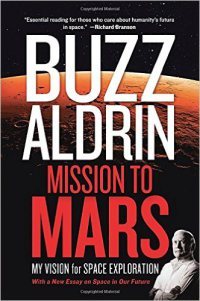
How we can send people to Mars
“Florida Institute of Technology held a signing ceremony formalizing the establishment of the Buzz Aldrin Space Institute at the university… led by legendary Apollo 11 astronaut Buzz Aldrin, the Institute will promote the settlement of Mars through research.”
At the age of 85, Aldrin is actively involved, not just a figurehead. He’s been reaching into space for decades. In 1963 he received a PhD with a thesis on Manned Orbital Rendezvous and six years later was the second man to walk on the Moon.
Aldrin struggled with depression and alcoholism and soared beyond. He could have become a ponderous public figure, but he seems to have a sense of humor – even making fun of himself on The Big Bang Theory.
He truly fits America’s vision of an astronaut.
Read the Florida Tech news
Read more about Buzz_Aldrin
Filed under: Neat Science News Tagged: astronaut, Buzz Aldrin, exploration, Florida Institute of Technology, Florida Tech, mars, mission to mars, space








September 3, 2015
Prevent #HIV #AIDS – Why Isn’t This Front Page News?
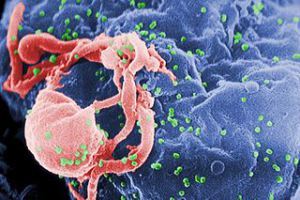 Clinical trials show PrEP pill reduces contracting HIV in high risk groups by 90%. It’s not perfect – this pill must be taken every day before any exposure, if you already have HIV and take PrEP you may breed drug-resistant disease, clinical trials aren’t gold-standard, and it could cost $1000 a month (less if you have insurance) – but – holy crap! Is this real? Some people seem to oppose the drug fearing it will lead to unsafe, no-condom sex and PrEP doesn’t prevent other STDs. I don’t see how anyone could condemn others to AIDS – a life altering disease even if treated – because it might encourage unsafe sex. Who deserves AIDS because they show poor judgment in condom use?
Clinical trials show PrEP pill reduces contracting HIV in high risk groups by 90%. It’s not perfect – this pill must be taken every day before any exposure, if you already have HIV and take PrEP you may breed drug-resistant disease, clinical trials aren’t gold-standard, and it could cost $1000 a month (less if you have insurance) – but – holy crap! Is this real? Some people seem to oppose the drug fearing it will lead to unsafe, no-condom sex and PrEP doesn’t prevent other STDs. I don’t see how anyone could condemn others to AIDS – a life altering disease even if treated – because it might encourage unsafe sex. Who deserves AIDS because they show poor judgment in condom use?
Please comment if you know more – this isn’t my usual posting topic because “medical breakthroughs” in the media can be “fall-throughs.” But keep an eye out for more information. In the meantime, I found some info on Truvada (the trade name) here, here, and here.
Filed under: Neat Science News









